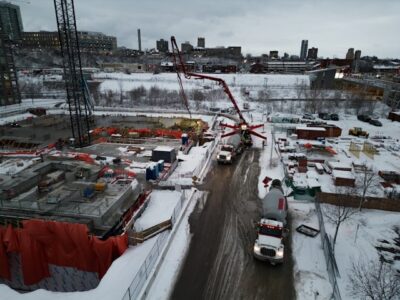Construction sites are complex places, typically filled with machinery and vehicles of all shapes and sizes. For this gear to get there in the first place, it requires a well-trained professional at the wheel. That’s where Class A and B CDLs come in, and understanding these licenses is a must for efficient project management. So without further ado, here’s the lowdown on what each type has to offer.
Class A CDL Explained
In brief, this license allows drivers to handle big rigs, which are crucial for transporting oversized equipment and materials. Given that there’s actually a growing shortage of trucking professionals in this field, to the tune of over 100,000 this year, it’s also an in-demand asset.
Those with a class A CDL to their name can:
- Drive tractor-trailers that move heavy machinery
- Transport building materials in bulk
- Handle multiple trailers simultaneously
Also, you’ll be the go-to for long hauls across states or navigating tight urban streets with hefty loads. The aim is to get the right gear to its destination promptly, keeping projects moving smoothly. Without them, getting all those beams and bulldozers to their destinations would be chaos. Plus, skilled operators minimize accidents and damage.
Class B CDL Uncovered
In construction, some vehicles don’t need the full might of a Class A. For single trucks like cement mixers and dump trucks, a class B CDL is required in many instances.
With this license in your pocket, you can:
- Operate straight trucks for concrete delivery
- Haul debris using dump trucks
- Transport tools and smaller equipment with box trucks
This isn’t just about size. Many projects involve tight turns or narrow streets where these nimble vehicles shine. Drivers play vital roles in city-bound builds or when working within constrained spaces on-site. Without them, deliveries wouldn’t make it to those hard-to-reach spots effectively. If you’re looking to join this essential workforce, consider the South Texas Vocational Technical Institute CDL Training to get started on the path to becoming a Class B driver. So next time you’re waiting for fresh concrete on site, remember that it’s the Class B holder making sure everything flows without a hitch.
Prioritizing Safety Protocols
In construction, safety is essential, yet it’s an industry that accounts for almost 20% of all workplace deaths. CDL holders can contribute to keeping hazards and missteps to a minimum by adhering to strict protocols which keep everyone safe.
Key elements for driver safety include:
- Regular vehicle inspections to ensure roadworthiness
- Understanding load limits and proper securing techniques
- Staying updated with the latest traffic regulations and industry standards
Training programs often emphasize defensive driving skills that prepare drivers for unpredictable site conditions. This proactive approach reduces risks of accidents or delays due to mishandled cargo.
Also, communication with site managers is vital for understanding each delivery’s unique demands. Drivers become integral team players when they align their practices with overarching safety plans on-site.
Recognizing Licensing Requirements
Getting a CDL is not a walk in the park, and that’s by design. Drivers need to work through complex regulations as a means of making sure that only the best hit the roads.
Key requirements typically involve:
- Passing both written and skills tests for technical know-how
- Undergoing medical evaluations to ensure physical fitness
- Completing background checks for safety compliance
Each state may have its own twists on these prerequisites, so staying informed about local laws is crucial. It’s a way of prospective or current employers getting concrete proof of competence and commitment.
Furthermore, ongoing education keeps drivers sharp as rules evolve or new equipment enters the market. Employers can support this process by providing access to resources or funding for refresher courses.
This diligent approach means that every driver is both licensed and prepared for real-world challenges, ensuring safe and efficient transport of construction materials every day. So if efficient construction project management is your aim, you can’t turn a blind eye to this aspect.
Final Thoughts
The reality is that understanding the role of Class A and B CDLs in construction is useful for keeping projects on track whether or not you’re the one who’s planning to get behind the wheel of large vehicles. Each license serves specific needs, from moving heavy equipment to delivering concrete, ensuring materials reach their destinations efficiently.
In summary:
- Class A covers big rigs and long hauls
- Class B manages site-specific vehicles
Emphasizing training and safety protocols means drivers can remain valuable assets to any team in the long term. It also builds a foundation for success in construction logistics, so prioritizing these elements boosts both efficiency and site safety from moment to moment.









 The 2024 virtual Men’s Round Table will be held Q4, 2024, date TBD.
The 2024 virtual Men’s Round Table will be held Q4, 2024, date TBD.













